Nipo Flange
Nipoflange is a connection that has a flange on one side and a Nipolet on the other side.
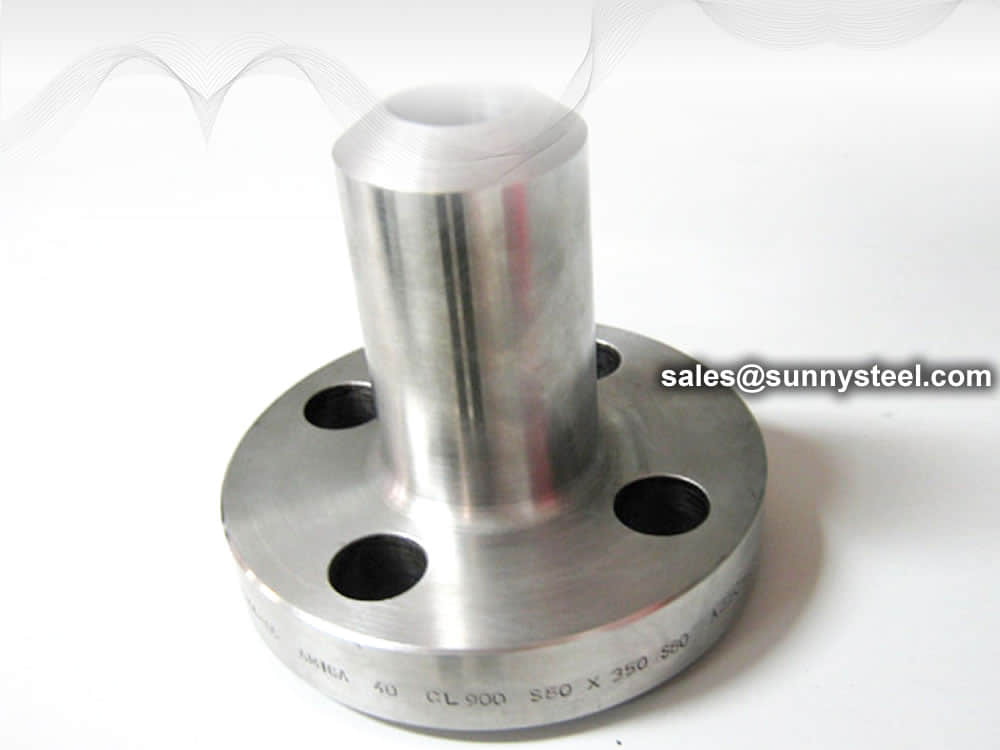
Nipoflange is a connection that has a flange on one side and a Nipolet on the other side.
Download PDFOn the run pipe side a nipoflange is designed like a weldolet. That means the branch connection on the run pipe side is a welding connection. On the other side there it has a flange connection. The flange connection can be designed according to customers requirements (acc. To DIN or ANSI).
A nipoflange similar to ANSI B 16.9 or MSS-SP 97 is manufactured from forged material. That means a nipoflange is a forged fitting without welding seam.
WAZ (acceptance test certificate)
Of course, you may obtain a standard cert. 3.1 with each delivery. Upon request, we are able to deliver a cert 3.2 (normally TüV or other inspection institutions). In the cert. 3.1, the chemical consistenc and the physical characteristics of the material are listed.
Anthermo is able to deliver nipoflanges in standard materials. Upon request special materials are also deliverable.
The Weldoflange and Nipoflange is a combination of a Welding Neck flange and a supposedly Weldolet or Nipolet. The 2 components are manufactured in one piece, and not welded. These flanges are primarily in Branch connections. Furthermore, they have an expanded range of special flanges, fittings and branch connections.
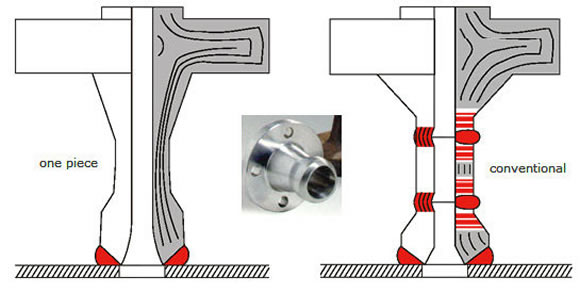
Nipoflange is a connection that has a flange on one side and a Nipolet on the other side. This allows for welding with the pipe with the Nipolet and then a regular flange connection on the other end. Stainless Steel Nipoflange Dimensions mandate the range of NPS 26 through NPS 60 up to 60 inches. A Carbon Steel Nipo Flange is used on a branch connection. Where corrosion resistance and ligh weight are preferred, the Alloy Steel Nipo Flange is used. Class 150 Nipoflange is a low pressure class flange. The different alloys such as the Inconel Nipoflange and the Hastelloy Nipo Flanges can serve different properties and purposes.
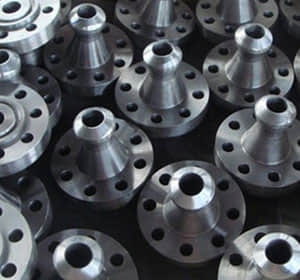
Carbon steel nipo flange
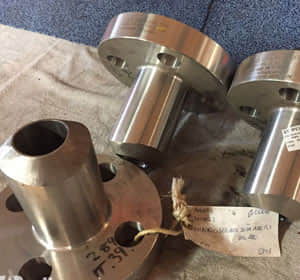
ASME B16.47 nipo flange
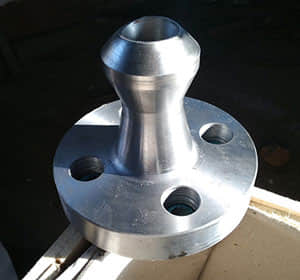
Stainless steel nipo flange
| Bride Nipo | Nipoflange |
|---|---|
| ANSI B16.5 Nipoflange | Dimensions de la bride Nipo |
| ASME B16.5 Nipoflange | ANSI B16.5 Classe 150 Nipoflange |
| Fournisseurs de nipoflange en acier inoxydable | Bride SS Nipo |
| Revendeur Nipo Flange | ASME B16.47 Série A et B Nipoflange Exportateur |
| ANSI B16.5 classe 150 Nipo Actionnaire de bride | Distributeurs de brides ANSI 150 Nipo |
| Bride Nipo en acier au carbone | Fabricant de Nipoflange de haute qualité |
| ASTM A182 Bride Nipo en acier inoxydable | Bride Duplex Steel Nipo |
| Bride Nipo en acier Super Duplex | Cuivre Nickel Nipoflange |
| Nipoflange en alliage de nickel élevé | Hastelloy Plat Face Nipoflange Stockiste |
| Titane ASME B16.47 Série A et B Nipoflange | Inconel Nipoflange |
They can remain original in up to 870 degrees Celsius; meaning, they can withstand high temperatures without losing the strength and corrosion resistance properties. There are many makes such as the Reinforced Nipoflange which is a nickel alloy flange. They are used in many other industries such as the sea water cooling systems, wiring components in electrostatic precipitators, oil refineries acetic acid industry, architectural structures such as railings and many more. The mechanical properties of these flanges make them oxidation resistant.The different compositions are used to match with the differently alloyed pipelines and to match the strength and pressure requirements of the applications.
A combination of weldneck flange and nipolet is a nipoflange. Nipoflange is shaped like a nipolet on the run side and has a flange connection on the branch size.
| Industry | Application |
|---|---|
| Oil and Gas | Use of stainless steel Nipoflange in pipelines and gas pipelines |
| Chemical Industry | Utilization of Nipoflange in the chemical industry |
| Plumbing | Use of alloy steel Nipoflange in plumbing |
| Heating | Utilization of Nipoflange in heating systems |
| Water Supply Systems | Utilization of Nipoflange in water supply systems |
| Power Plants | Use of Nipoflange in power plants according to ANSI B16.5 |
| Paper and Pulp Industry | Utilization of Nipoflange in the paper and pulp industry |
| General Purpose Applications | Use of Nipoflange in general applications |
| Manufacturing Industry | Utilization of Nipoflange in the manufacturing process |
| Food Processing Industry | Utilization of Nipoflange in the food processing industry |
| Structural Pipes | Utilization of Nipoflange in structural pipe applications |
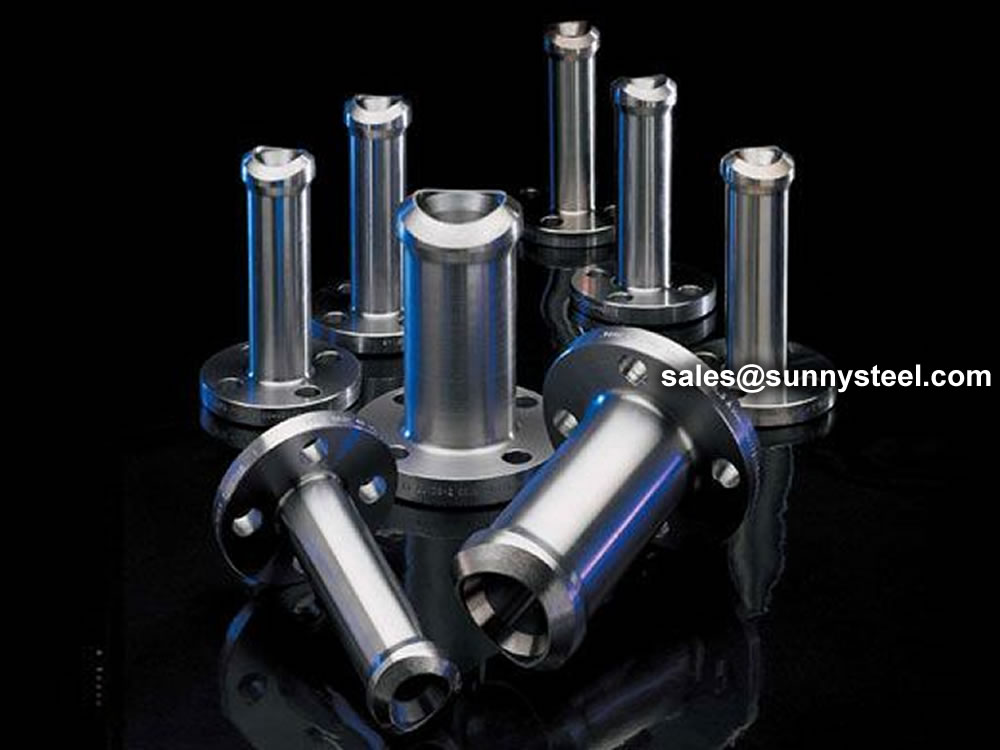
A flange-olet (flange-outlet) is also called nipoflange or weldoflange,its shape looks like a Long weld neck flange.It could be regarded as a combination of a long weld neck flange and a weldolet,or a nipolet welded with a weld neck flange.
The flange-olet is used for a 90° branch connection from a main pipe.On the run pipe side,the flangeolet is designed like a weldolet,it will welded with the run pipe as a branch of the pipe.On another side,the flange-olet is a flange connection,this flange dimensions could be designed as per EN1092,ASME/ANSI B16.5 standard or other codes.
The flange-olet is produced in forging and machining process,it is forged material,commonly the flange-olet is a integral forging without any welding seam.It is first produced in forging process from UK.The flange-olet could be in forged carbon steel material,stainless steel material or alloy steel material.

Pipe flanges are manufactured in all the different materials like stainless steel, cast iron, aluminium, brass, bronze, plastic etc. but the most used material is forged carbon steel and have machined surfaces.
Flanges are welded to pipe and equipment nozzle. Accordingly, it is manufactured from the following materials;
The list of materials used in manufacturing is covered in ASME B16.5 & B16.47.
Commonly used Forged material grads are
| Material | Fittings | Flanges | Valves | Bolts & Nuts |
|---|---|---|---|---|
| Carbon Steel | A234 Gr WPA | A105 | A216 Gr WCB | A193 Gr B7 A194 Gr 2H |
| A234 Gr WPB | A105 | A216 Gr WCB | ||
| A234 Gr WPC | A105 | A216 Gr WCB | ||
| Carbon Steel Alloy High-Temp |
A234 Gr WP1 | A182 Gr F1 | A217 Gr WC1 | A193 Gr B7 A194 Gr 2H |
| A234 Gr WP11 | A182 Gr F11 | A217 Gr WC6 | ||
| A234 Gr WP12 | A182 Gr F12 | A217 Gr WC6 | ||
| A234 Gr WP22 | A182 Gr F22 | A217 Gr WC9 | ||
| A234 Gr WP5 | A182 Gr F5 | A217 Gr C5 | ||
| A234 Gr WP9 | A182 Gr F9 | A217 Gr C12 | ||
| Carbon Steel Alloy Low-Temp |
A420 Gr WPL6 | A350 Gr LF2 | A352 Gr LCB | A320 Gr L7 A194 Gr 7 |
| A420 Gr WPL3 | A350 Gr LF3 | A352 Gr LC3 | ||
| Austenitic Stainless Steel | A403 Gr WP304 | A182 Gr F304 | A182 Gr F304 | A193 Gr B8 A194 Gr 8 |
| A403 Gr WP316 | A182 Gr F316 | A182 Gr F316 | ||
| A403 Gr WP321 | A182 Gr F321 | A182 Gr F321 | ||
| A403 Gr WP347 | A182 Gr F347 | A182 Gr F347 |
ASTM standards define the specific manufacturing process of the material and determine the exact chemical composition of pipes, fittings and flanges, through percentages of the permitted quantities of carbon, magnesium, nickel, etc., and are indicated by "Grade".
The usual materials of flanges include stainless steel, carbon steel, aluminum and plastic. The choice of the material largely depends on the purpose of the flange. For example, stainless steel is more durable and is necessary for heavy use. On the other hand, plastic is more feasible for use in the home because of its reasonable price and easy installation. The materials used for flanges are under the designation of the American Society of Mechanical Engineers.
The most common materials for pipe flanges (forged grades) are: ASTM A105 (carbon steel high temperature to match A53/A106/API 5L pipes), A350 Grades LF1/2/3 (carbon steel low temperature to match A333 pipes), A694 Grades F42 to F80 (high yield carbon steel to match API 5L pipe grades), ASTM A182 Grades F5 to F91 (alloy steel flanges to match A335 pipes), A182 Grade F304/316 (stainless steel flanges to match A312 SS pipes), A182 Gr. F44/F51/F53/F55 (duplex and super duplex to match A790/A928 pipes) and various nickel alloy grades (Inconel, Incoloy, Hastelloy, Monel).
The material qualities for these flanges are defined in the ASTM standards.
For example, a carbon steel pipe can be identified with Grade A or B, a stainless-steel pipe with Grade TP304 or Grade TP321, a carbon steel fitting with Grade WPB etc.
Pipe Flange Standards mainly include three systems in the world, ANSI/ASME flange system(American), DIN flange system(European system), JIS flange system, other system made according to this three systems, like GB flange standard, which mainly made according to ANSI/ASME and DIN flange standard, Duwa Piping supplies those flanges with top quality and soonest delivery time.
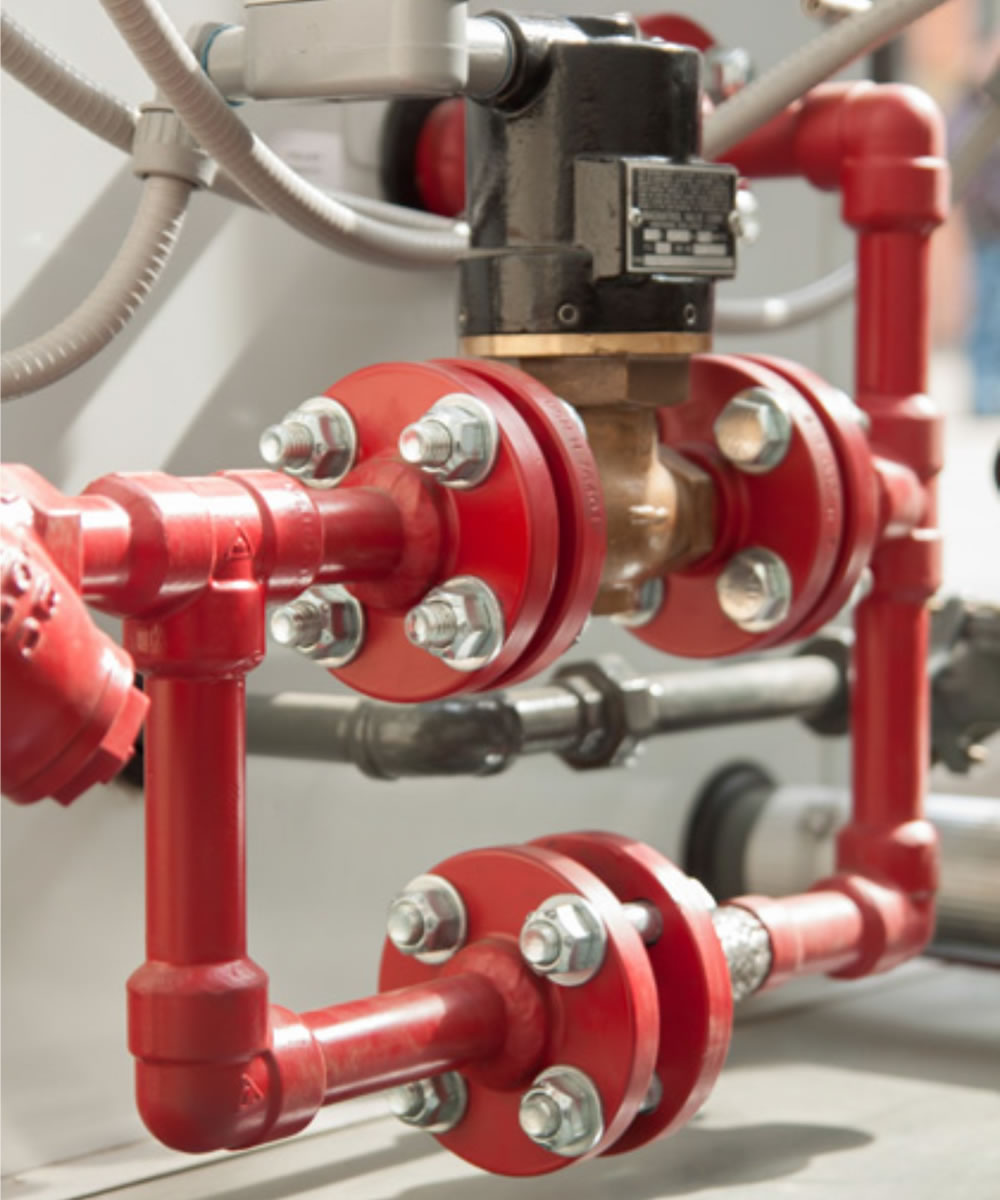
A flange is a method of connecting pipes, valves, pumps, and other equipment to form a piping system. It also provides easy access for cleaning, inspection, or modification.
When a piping joint requires to be dismantled, flanges are being used. These are primarily used on equipment, valves, and specialty items. Breakout flanges are provided at predetermined intervals in certain pipelines where maintenance is a regular occurrence. The flanges, gaskets, and bolting make up a flanged joint, which is made up of three separate but interconnected components. To achieve a leak-proof joint, special controls are required in the selection and application of all of these elements.
Here are the details of Flanges about their advantages and their applications.
Pipes, valves, pumps, and other parts are connected with flanges to form a piping system. Generally, flanges are welded or screwed together. The use of flanges makes pipe system maintenance and repair a breeze. Instead of taking the entire pipe for inspection, a small section of the pipe can be carefully investigated to use a flange to locate the fault.
The following are the five most important benefits of The following are the five most important benefits of flanges:
A flange is a method of connecting pipes, valves, pumps, and other equipment to form a piping system. It also provides easy access for cleaning, inspection, or modification. Flanges are usually welded or screwed.
In many applications, engineers need to find a way to close off a chamber or cylinder in a very secure fashion, usually because the substance inside must differ from the substance outside in composition or pressure.
They do this by fastening two pieces of metal or other material together with a circle of bolts on a lip. This “lip” is a flange.
You can connect two sections of metal piping by soldering or welding them together, but pipes connected in this way are very susceptible to bursting at high pressures. A way of connecting two sections of pipe more securely is by having flanged ends that you can connect with bolts. This way, even if gases or liquids build up to high pressures inside the pipe, it will often hold with no problem.
In order to connect two sections of a large, enclosed area, it is often best to used flanges and bolts. An example of this is the connection between the engine and the transmission in an automobile. In this case, both the engine and the transmission contain a number of moving parts that can easily get damaged if they get dust or other small objects inside of them. By connecting the outer casings of the engine and transmission in this way, engineers protect the inner workings of both.
Flanges have a specific purpose in cameras and other electronic devices. Though flanges in such items do not usually have to sustain high pressures, they do have to hold tight so they can keep out harmful particles. These flanges are usually found connecting two different materials, such as the glass of a lens and the rest of the body of the camera.
The most frequently asked questions regarding flanges and flange fittings have to do with how flanges fit on specific steel tube and steel pipe ends.
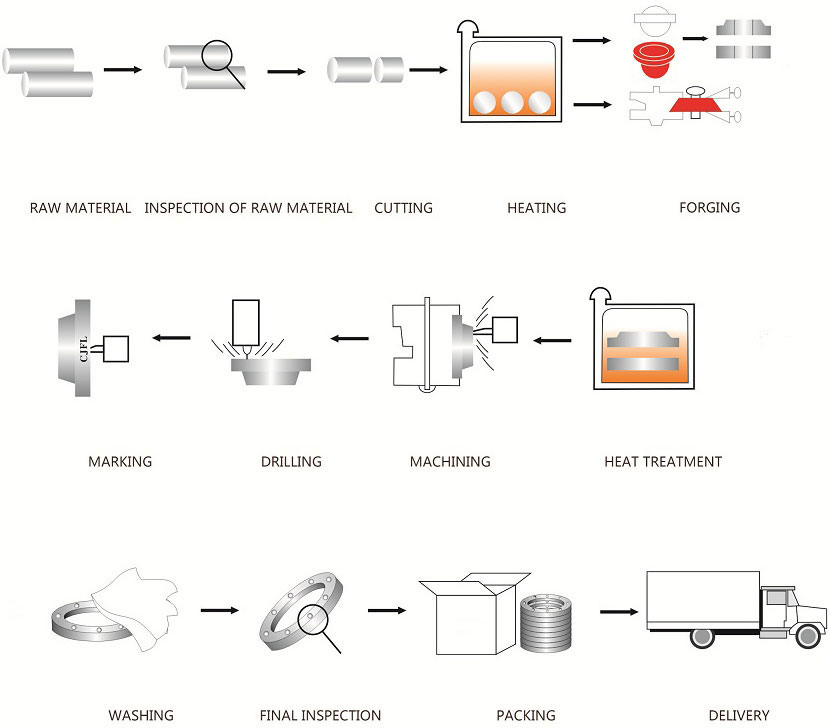
Flanges have flat or flush surfaces that are vertical to the pipe to which they are attached. The attachment process involves mechanically joining two or more faces using bolts, adhesives, collars, or welds. Due to the attachment requirements, a flange must fit the equipment or pipe that it’s designed. That’s why it’s necessary to check all the possible specifications and dimensions to ascertain that it’s of the right size, type, and material.
Pipe flanges, gaskets, and bolts are the three parts that comprise a flanged connection. Gaskets and bolts are typically made of the same flange materials or a material approved for the pipe components. Each component comes in various materials that suit specific applications and must be matched correctly for proper functioning. The gaskets come in two conventional types: full-face gaskets and ring gaskets. Full-face gaskets have the bolt holes visible and pair up with raised-face gaskets. Ring gaskets tend to be smaller rings minus the bolt holes and pair up with flat-faced flanges. Securing the flange components requires matching the surfaces evenly and plumb, adjusting as needed for a uniform fit. Once all surfaces match, bring the flanges together and secure at least two of the bolts. Refine the alignment, so the remaining bolt holes match and their corresponding bolts are tightly secured.
Properly sizing a flange for pipe use depends not only on the type of flange but its compatible piping. The pipe must slip into the flange’s inside diameter easily and securely, and the outside diameter should cover wall holes. Once you determine the specific flange type and material you need for the job, you’ll need to take several measurements. The four measurements you’ll need are the inside diameter, outside diameter, bolt hole count, and bolt hole center. You’ll need to align each of these measurements from opposing bolt holes to get the most accurate readings. Take all measurements from edge to edge and try to get as precise as possible to match the correct product. Round up bolt diameter to the next half or whole step since bolts measure half or whole inches. Once you have all four measurements, check them against the manufacturer’s table to find the correct flange. Most manufacturers list these specifications on their websites for easy reference.
Before dispatching from manufacture each flange is inspected to ensure quality. During an inspection you have to check the following;
ASME B16.5 and B16.47 standards cover permissible tolerances for inspection.
Flanges are used to connect pipes or other equipment components in various industries, and they come in a variety of materials and sizes. Flange material standards are developed by standard-setting organizations and describe the properties and characteristics of different materials that can be used to make flanges. Some examples of commonly used flange material standards include:
The choice of flange material standard will depend on various factors such as the application, the environment, the fluid being transported, and the required performance characteristics. For example, high-pressure applications may require flanges made from materials with high strength and durability, while corrosive environments may require flanges made from materials with good resistance to corrosion.
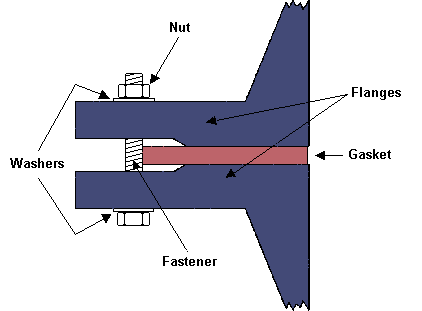
There are many ways to connect flanges, including threading, welding or bolting. The threaded flange is best for low pressure or smaller pipelines because it can maintain its seal. When your pipeline is larger or high pressure, then the welded flange is preferable. A boiler room is one place where welded blind flanges might be used, due to the high pressure involved.
Flanged joints: flanges, bolts and nuts and gaskets
A flange is a external rib at the end of pipes, valves and other flow devices to assemble them.
Dimensions of the flanges are up to specific Standards : DIN, ANSI, AS, BS, JIS
A flanged connection requires two flanges (the “main” and the “companion”), a set of bolts and nuts (whose number depends on the flange diameter and class) and two sealing gaskets. Flanged connections have to be executed and supervised by trained personnel, as the quality of the joint has a critical impact on the performance of the piping system / pipeline (the standard TSE – TS EN 1591 Part 1-4, “Flanges and their joints”, defines a number of requirements for the execution of proper flanged connections). Whereas all elements of the joint are critical, experience shows most leaks are originated by the improper installation of the sealing elements, i.e. the gaskets.
The typical pipe to flange connections are welded or threaded. Welded flanges are used for pipelines and piping systems with high pressures and temperatures, and with diameters above 2 inches.
Threaded connections are instead used for installations of smaller diameter and not subject to severe mechanical forces such as expansion, vibration, contraction, oscillation (forces that would crack the threaded joint). In all these critical cases, butt weld connections are recommended.
Steel flanges must be packed with seaworthy packing method then delivery to customers, usually the packing way include wooden box, wooden pallet, iron & steel cage, iron & steel pallet etc.

Flange markings are governed by ANSI ASME codes. Flange marking includes;
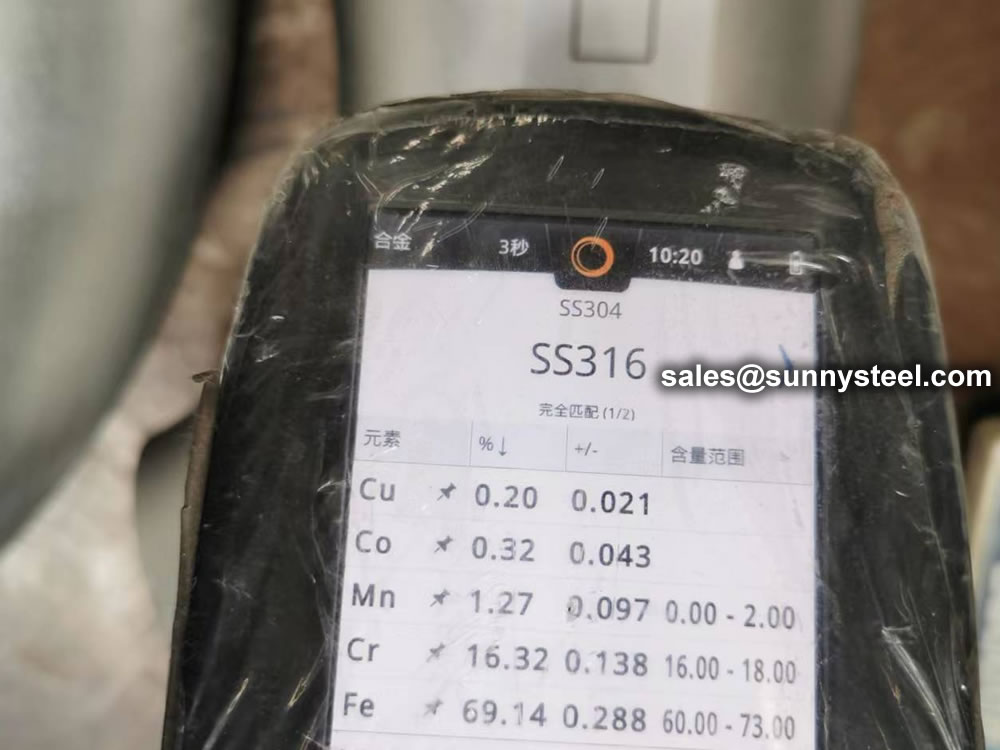
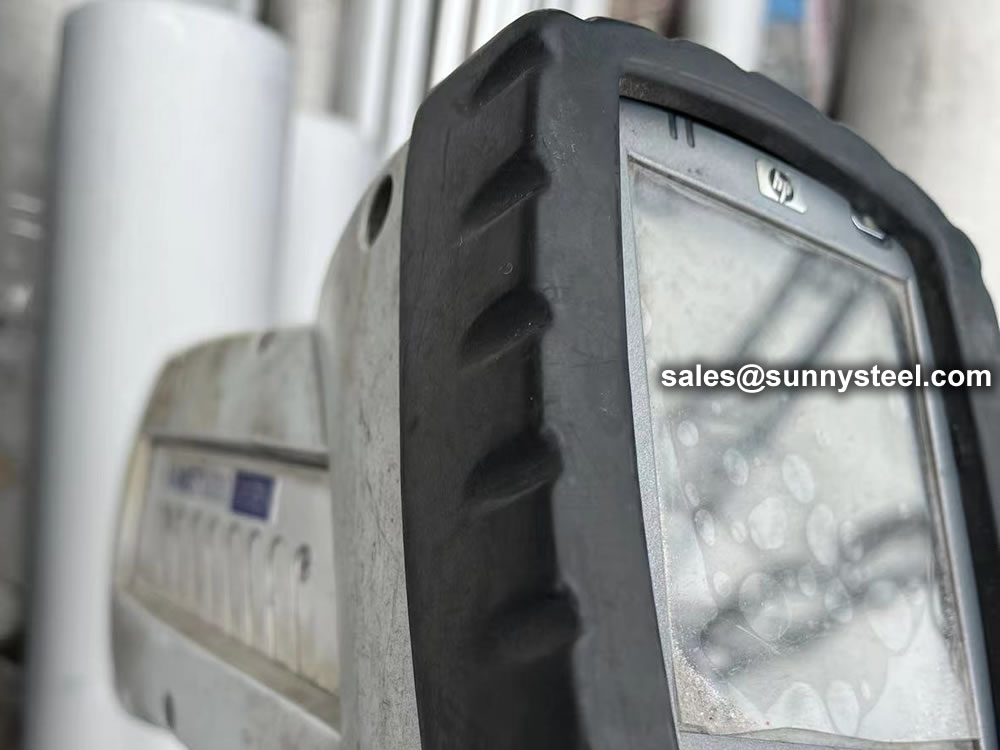
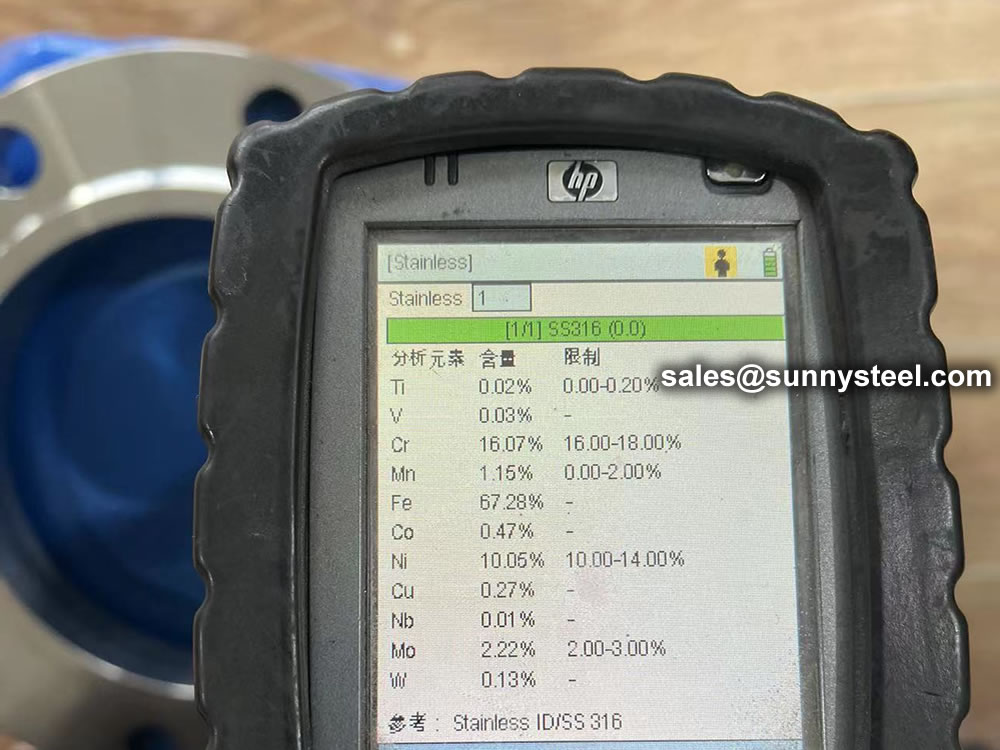
ASME B16.5 and B16.47 standards cover permissible tolerances for inspection.
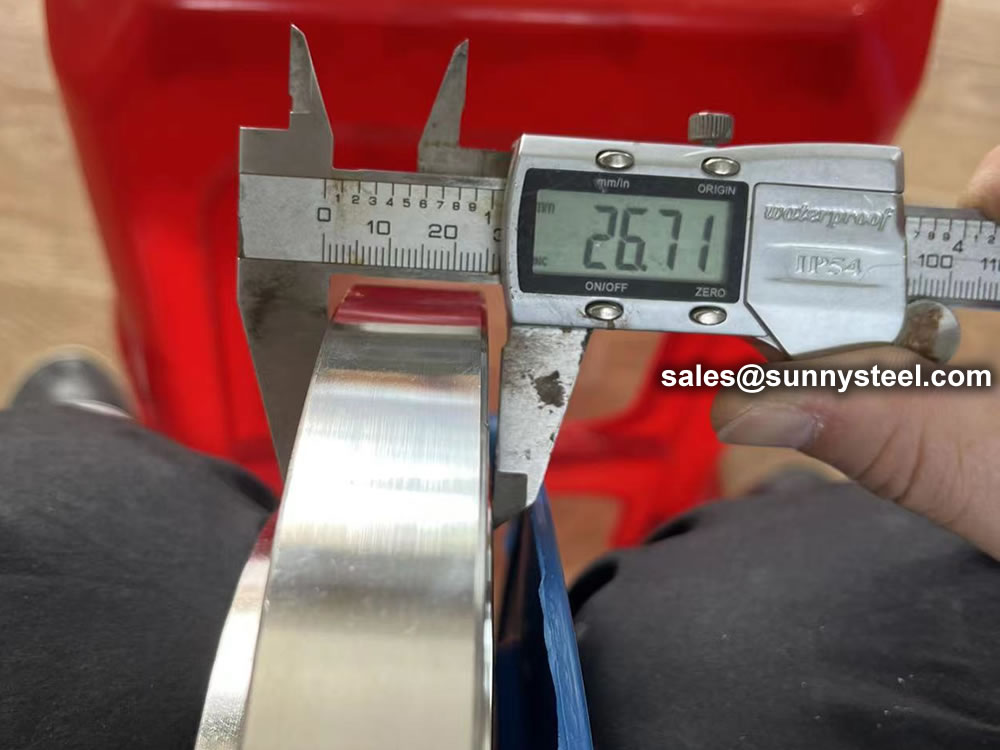
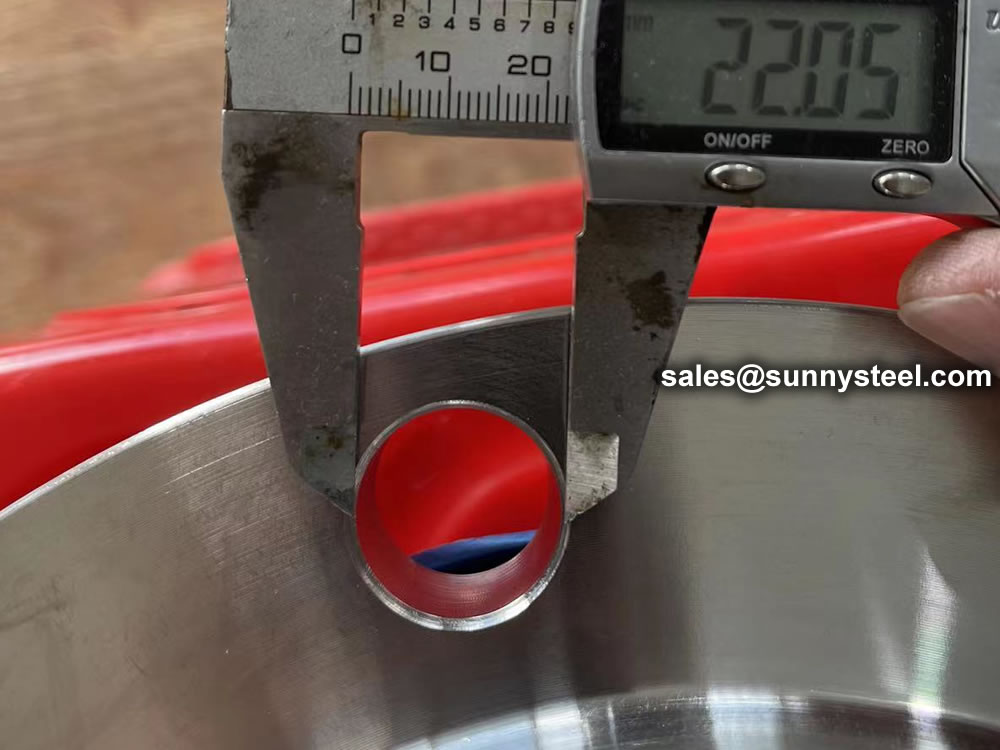
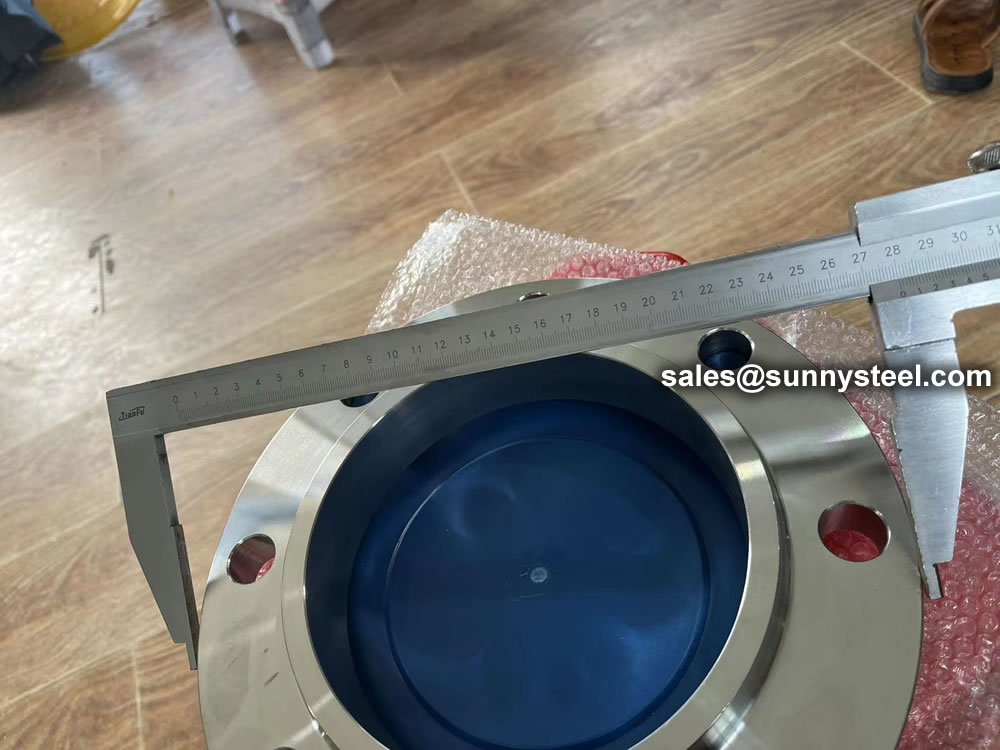
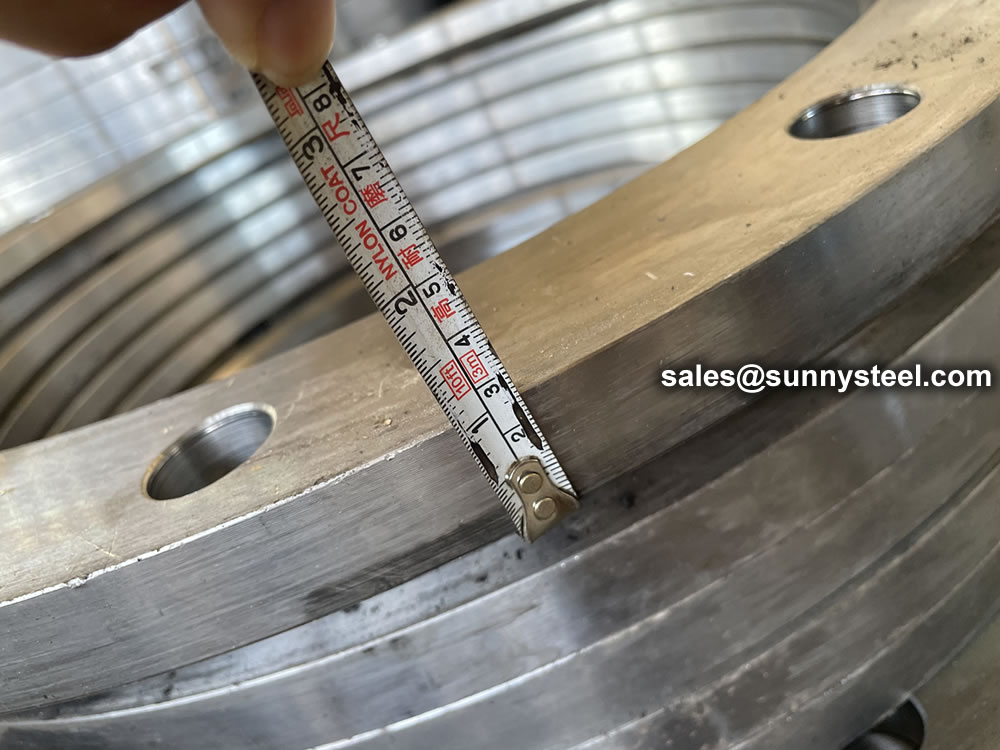
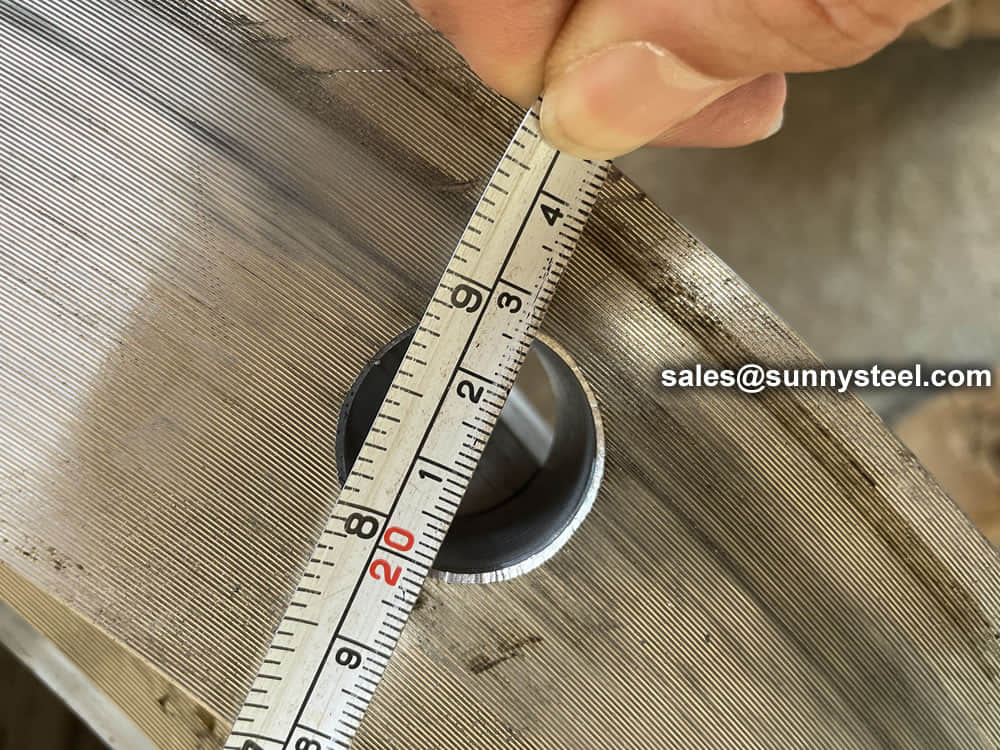
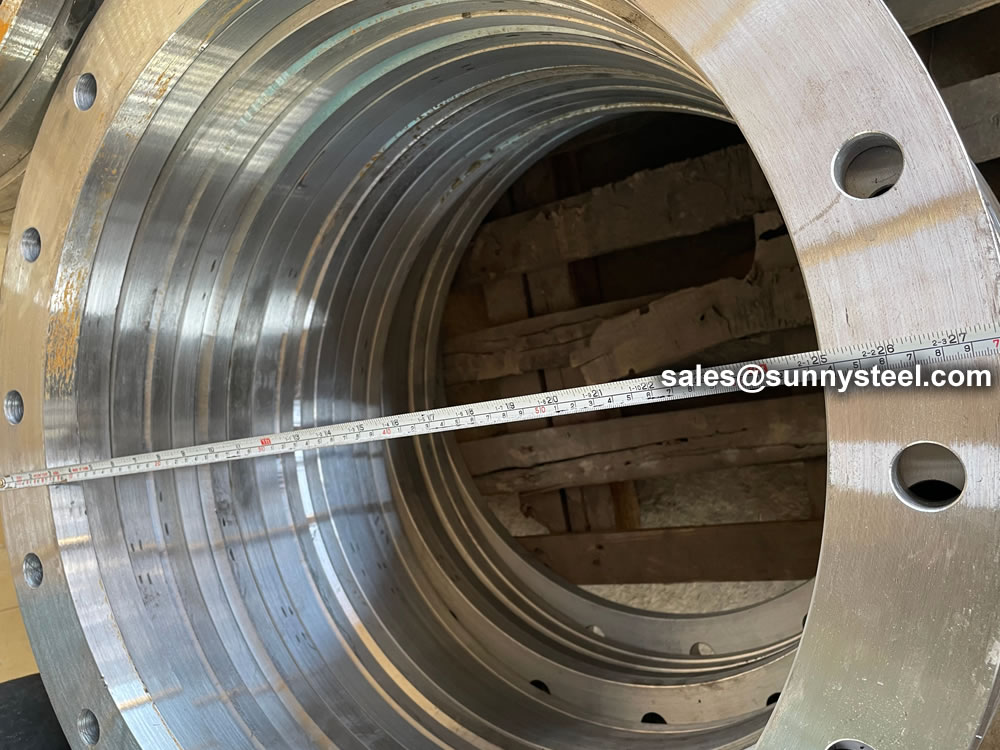
Because of the normal wooden boxes or wooden pallets have to do fumigation treatment, we usually use plywood pallet or plywood case or box to pack steel flanges without fumigation treatment.
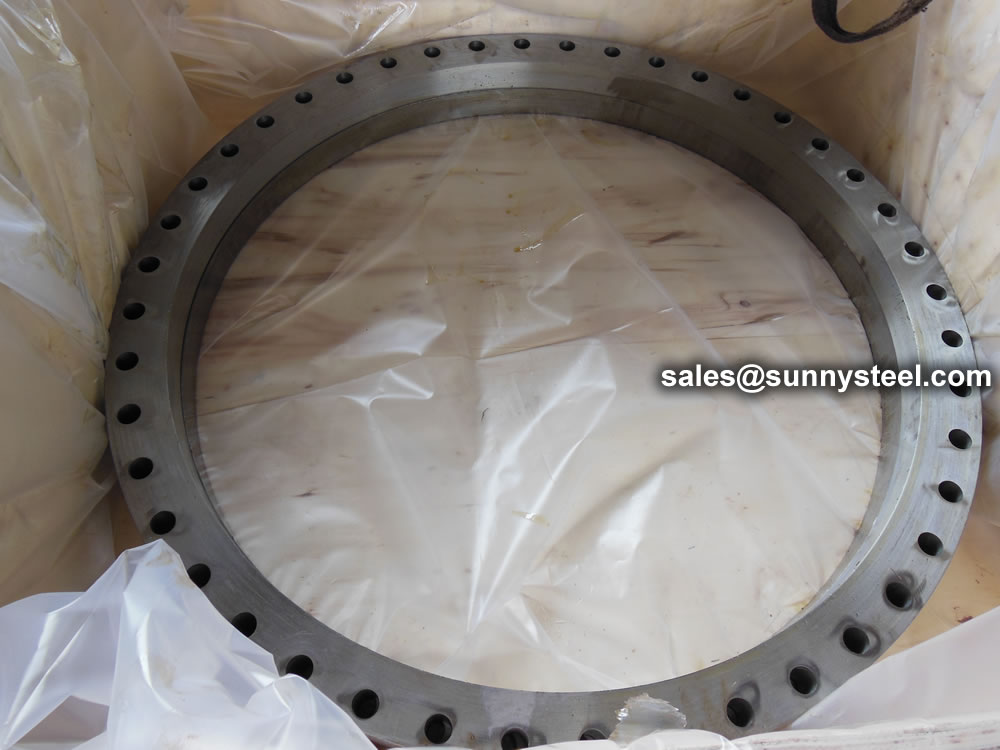
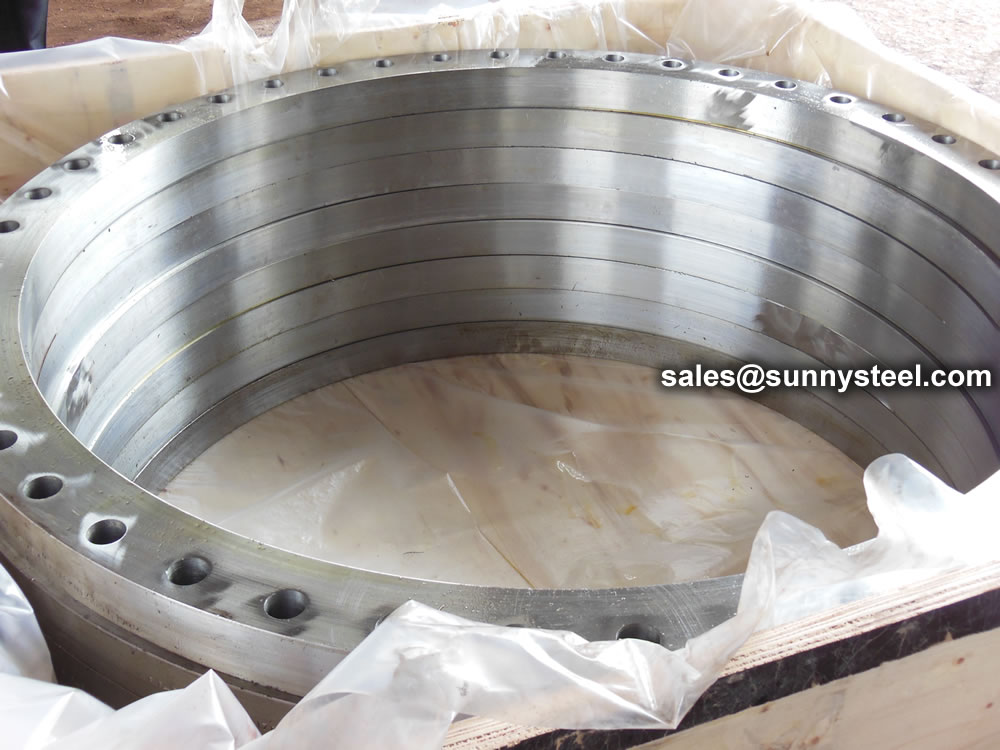
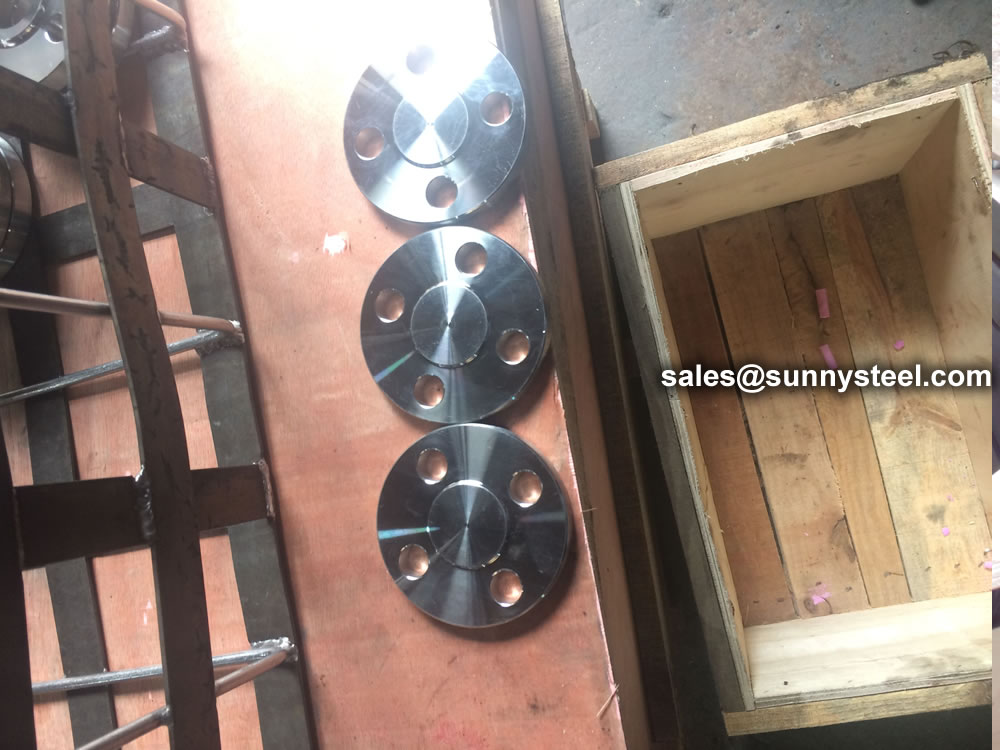




When you partner with Sunny Steel, you can stop worrying about meeting deadlines thanks to our responsive and timely service. You'll also say goodbye to unnecessary shopping around. Instead, you'll get white glove service from an expert who understands your needs and can get you the materials you need quickly.
